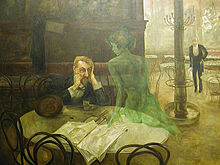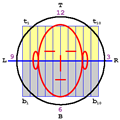Hi
I am writing a song with tablature , notation (classical guitar) and midi measures.
When I want to copy and paste a 'verse' - the position of the midi notes change relative to the tablature/notation, so the music gets all jumbled up.
Can anyone advise how I can copy whole regions of notation and midi creating and paste the section in full ?
Thanks
Pete
- It is currently Sun Jul 06, 2025 10:04 am • All times are UTC - 5 hours [ DST ]
Attention:
Welcome to the old forum. While it is no longer updated, there is a wealth of information here that you may search and learn from.
To partake in the current forum discussion, please visit https://forums.presonus.com
Pasting Score & Midi - Overlaps - help! Screenshots
2 posts
• Page 1 of 1
Pasting Score & Midi - Overlaps - help! Screenshots
- Attachments
-
- original verse
- Screen Shot 2012-01-29 at 10.49.18.png (360.11 KiB) Viewed 2724 times
-
- copied verse
- Screen Shot 2012-01-29 at 10.49.34.png (360.46 KiB) Viewed 2724 times
- petemckavanagh
- Posts: 5
- Joined: Fri Apr 02, 2010 3:10 pm
Re: Pasting Score & Midi - Overlaps - help! Screenshots
petemckavanagh wrote:Hi
I am writing a song with tablature , notation (classical guitar) and midi measures.
When I want to copy and paste a 'verse' - the position of the midi notes change relative to the tablature/notation, so the music gets all jumbled up.
Can anyone advise how I can copy whole regions of notation and midi creating and paste the section in full ?
With the caveat that I do everything with standard music notation and occasionally a bit of guitar tablature, there are two rules that work for me:
(1) Before inserting a copied section or phrase into the middle of a song, I first add a bunch of empty measures, typically a few more than the number of copied measures being inserted. For example, if a verse has 16 measures and I want to copy it and insert it after a chorus, then I create 18 or so empty measures after the chorus using the measure bar tool in the palette, and then I reposition the insertion point and do the paste . . .
(2) Before inserting a copied section or phrase at the end of a song, I first add a few empty measures to the end of the song . . .
Other than ensuring that there are enough empty measures to hold the section or phrase being pasted, this is all I need to do, although I do a "Save" or "Save As" immediately after I check everything and verify that the pasted section or phrase is working correctly . . .
OBSERVATIONS AND SUGGESTIONS
There are a few eccentric behaviors in NOTION 3, but when I encounter one of them I always have been able to devise a workaround by doing a few experiments . . .
Some folks might find the strategy of doing experiments to determine a suitable workaround to be a bit of a vastly annoying hassle, but NOTION 3 does things (a) that I need to do and (b) that I cannot do with any other software, so being a practical fellow, I am very happy when I find a workaround, and in some instances finding a workaround has required several long days of doing constant experiments, sometimes to the extent of having to reboot the Mac Pro every 30 minutes, which is virtually mind-boggling, but so what . . .
So what!
Once I have the eccentric behaviors identified and there is a workaround for each one, this becomes part of the overall "system" or "formula", and everything is wonderful here in the sound isolation studio . . .
Putting everything into perspective, at this time two years ago, I did not know that there was computer software for doing music notation; I did not know what a VSTi virtual instrument was; and I had no idea what ReWire was;, which is a lot of stuff not to know, but this was fine with me, since I play all the instruments I needed to play at the time in the specific genres I was doing . . .
However, earlier in 2010 I became fascinated with Flamenco music and soon thereafter decided to do a Flamenco song in the Bulería style, which after getting a Bulería metronome led me to the disturbing epiphany that there was no way I could do the drumkit rhythm without a lot of practicing, since drums are not my primary instrument, so I had the curiously intriguing idea that there might be a way to do it with music notation, which eventually led to discovering Miroslav Philharmonik, which in turn led to discovering NOTION SLE for Miroslav Philharmonik and then a few weeks later to upgrading to NOTION 3 . . .
Overall, it took approximately 18 months and somewhere in the range of 1,000 to 1,500 hours of reading, studying, and experimenting to make sense of all this stuff, which is the way it works here in the sound isolation studio, and now I have a complete "system" or "formula" for doing songs, which is working very nicely for my current project, which is an album of silly DISCO and Pop songs about ladies underpants . . .

And it is a complete system, because it includes an elaborate workaround strategy that makes it possible for me to have as many as 500 to 1,000 "heavy" VSTi virtual instruments done with music notation in NOTION 3 for a song, where the basic strategy is to have a set of synchronized NOTION 3 scores, each of which has 20 to 25 "heavy" VSTi virtual instruments, where I keep all of the synchronized NOTION 3 scores in a folder and name them with numerical suffixes, where at the high end there might be as many as 50 synchronized NOTION 3 scores, each of which I get into Digital Performer 7.24 as soundbites via ReWire, which itself has a few eccentric and puzzling rules, but it works, which is the primary criterion for everything here in the sound isolation studio . . .
When I was in college, I worked in a grocery warehouse where my job was to put individual sticky price tags on tubes of Crest® toothpaste, and over three or so years I put approximately 100 million individual sticky price tags on tubes of Crest toothpaste, so my tolerance for doing essentially mundane, boring, and repetitive stuff over and over and over is extraordinary, and so long as there is a reasonable probability of success sooner or later, then I have no problems doing experiments for hundreds of hours, which was what I had to do to make sense of some of the more eccentric behaviors of NOTION 3, but so what . . .
So what!
The first song required approximately 300 to 500 hours, but after doing several more songs now I can do one in 50 to 100 hours, and I think this can be improved, although perhaps not, because it takes a while to "sparkle" and instrument and I think that songs need more "sparkles" rather than fewer "sparkles" . . .
So, my suggestion is to do some experiments, where the first experiment is to copy and paste each staff or instrument separately rather than trying to copy and paste the entire section of all the staves and so forth, because yet another important thing to understand about NOTION 3 is that the nearer it gets to the upper limit of the 32-bit application workspace, the more unusual stuff begins happening, which certainly includes copying and pasting behaving in vastly strange ways, which from a software engineering perspective is what tends to happen when coding is done using frameworks, classes, and all that stuff, as contrasted to doing everything in low-level C/API with abundant bounds checking and so forth . . .
If your song only has four or five instruments, then you are not experiencing eccentric behaviors caused by pushing the upper limit of the 32-bit application workspace, but so what . . .
So what!
If doing something at a high level does not work, then I use what I call the "Divide and Conquer" rule and do it in smaller steps, which is the first thing I recommend trying . . .
Lots of FUN!
P. S. This song has a lot of "sparkles", where "sparkling" is the name I use for the technique that puts the individual notes of an instrument into motion across what I call the "rainbow panning arc", so that when you listen with headphones stuff moves around within what I call the "Spherical Sonic Landscape", where my avatar for this FORUM is one vector plane of the Spherical Sonic Landscape and is what you see when you are sitting in a chair at the back of your mind looking forward, which is fabulous . . .
[NOTE: All the instruments are done with music notation and IK Multimedia virtual instruments in NOTION 3, where the NOTION 3 generated audio is recorded as soundbites in Digital Performer 7.24 via ReWire, and in this song there are somewhere in the range of 100 to 150 "heavy" VSTi virtual instruments spread over seven (7) or so synchronized NOTION 3 scores, primarily because fully "sparkling" an instrument requires spreading its notes over eight (8) staves, and there are a lot of "sparkled" instruments in this song, which is easy to hear when you listen with headphones . . . ]

"The Absinthe Drinker" (Viktor Oliva)
"(Baby You Were Only) Dreaming" (The Surf Whammys) -- MP3 (9.2MB, 276-kbps [VBR], approximately 4 minutes and 26 seconds)
Fabulous!
P. P. S. The basic rules for the complete system are documented in the following topic in this FORUM, but there is another topic on the panning rules for doing "sparkling", which might be in the IK Multimedia FORUM or the GuitarZone.com FORUM, since I have topics there, as well, although I suppose it might be in this one, really . . .
Notion 3, DISCO Songs, and Sparkles (Notion Music FORUM)
Really!
-

Surfwhammy - Posts: 1137
- Joined: Thu Oct 14, 2010 4:45 am
2 posts
• Page 1 of 1
Who is online
Users browsing this forum: No registered users and 31 guests